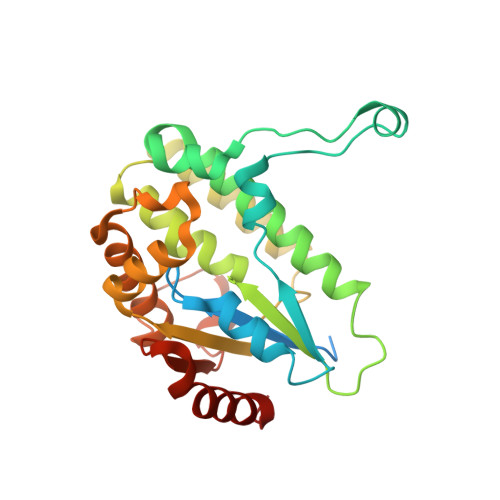Elucidation of different binding modes of purine nucleosides to human deoxycytidine kinase
Sabini, E., Hazra, S., Konrad, M., Lavie, A.(2008) J Med Chem 51: 4219-4225
- PubMed: 18570408
- DOI: https://doi.org/10.1021/jm800134t
- Primary Citation of Related Structures:
2ZI7, 2ZI9, 2ZIA - PubMed Abstract:
Purine nucleoside analogues of medicinal importance, such as cladribine, require phosphorylation by deoxycytidine kinase (dCK) for pharmacological activity. Structural studies of ternary complexes of human dCK show that the enzyme conformation adjusts to the different hydrogen-bonding properties between dA and dG and to the presence of substituent at the 2-position present in dG and cladribine. Specifically, the carbonyl group in dG elicits a previously unseen conformational adjustment of the active site residues Arg104 and Asp133. In addition, dG and cladribine adopt the anti conformation, in contrast to the syn conformation observed with dA. Kinetic analysis reveals that cladribine is phosphorylated at the highest efficiency with UTP as donor. We attribute this to the ability of cladribine to combine advantageous properties from dA (favorable hydrogen-bonding pattern) and dG (propensity to bind to the enzyme in its anti conformation), suggesting that dA analogues with a substituent at the 2-position are likely to be better activated by human dCK.
Organizational Affiliation:
Department of Biochemistry and Molecular Genetics, University of Illinois at Chicago, 900 S. Ashland (M/C 669), Chicago, Illinois 60607, USA.
















